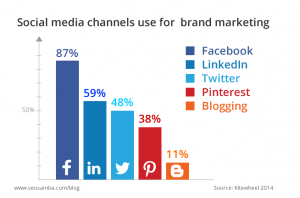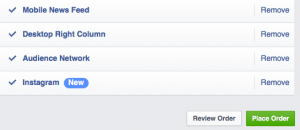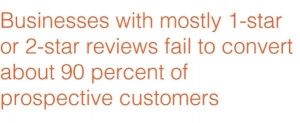You’ve probably heard terms like micro-moments and micro-content. These phrases might sound like buzzwords, but they aren’t.
Micro-moments and micro-content stem from the shift to mobile. Two-thirds of people in the United States have smartphones and use multiple devices a day. As a result, how we consume content has changed dramatically. Smartphones are search-driven devices, giving consumers the power to go anywhere, research anything, make an instant purchase, compare prices, and more. This behavior indicates that consumers value immediacy and relevance when they interact with brands.
To help you develop a strategy to win micro-moments with micro-content, I’ve broken down the basics of each below. I highly recommend checking out Think With Google’s work, too. You’ll learn a lot.
What Are Micro-Moments?
Think With Google has conducted extensive research on micro-moments and broken them down into clear, motivations-based categories. Mobile actions are real-time and intent-driven, and micro-moments reflect that. Here, we’ll go through four key types of micro-moments from the consumer’s point of view to uncover what drives them to take action.
I-Want-to-Do Moments
These moments occur when an individual turns to his or her smartphone for inspiration, as 91 percent of smartphone users do. This could be to look for recipes, DIY home solutions, makeup tips, or workout ideas.
I-Want-to-Go Moments
“Near me” searches have increased by 34 percent since 2011. Think about all of the times when you grab your phone to find a coffee shop, dog park, sushi restaurant, or other business to meet a specific, in-the-moment need or want. In those moments, you want to find where to go quickly.
I-Want-to-Buy Moments
Fairly self-explanatory, these micro-moments occur when a consumer wants to make a purchase and is deciding how much she wants to spend, how she wants to buy the good or service, and what exactly she wants to buy.
I-Want-to-Know Moments
These moments are the result of pure curiosity. A consumer might see something in a commercial and look it up or might need to settle a debate with a friend. They’re looking for information they can use right away.
Marketers can provide value in each of these moments – and that’s where micro-content comes in.
What Is Micro-Content?
Put simply, micro-content is short-form, high value content created with consumers’ limited attention spans in mind. Generally, micro-content is visual, either a short video or an image with a little text. After a consumer grabs his phone, the brand’s challenge becomes not only capturing attention, but also keeping him engaged.
Micro-content needs to be immediately helpful and engaging; consumers will leave otherwise. It’s also important to maintain an authentic voice. Remember, many of the consumers viewing your content came looking for something in particular and won’t always appreciate a heavily branded message.
A simple, easy user experience also matters, because they don’t want to search for what they need. Clear goals in the user interface and a clean design will help consumers quickly consume your content.
Keep context in mind, too. A micro-moment occurred that spurred a consumer to take an action, so your response as a brand needs to match that initial push. Micro-content can quickly alert your consumers to the products that are in-stock in nearby stores, show them how to style their hair with beauty products like yours, or give them a quick quiz to find the running shoes best suited for their needs.
Getting Started With Micro-Marketing
While the prefix micro might make these moments and content seem small and insignificant, that’s not the case. Micro-moments are rapidly coming to comprise the new customer journey, which is full of countless different paths to purchase.
Start by mapping out possible micro-moments that your customers might have and how you can help them with micro-content. This will get you thinking about customers’ needs in the moment, and under what circumstances they occur. From there, think about the kind of micro-content your brand can provide. Maybe it’s a Snapchat tutorial for frosting cupcakes or a swipeable infographic with the scores from last night’s NBA games – you’ll have to find what resonates best with your audience.
Digital & Social Articles on Business 2 Community(45)




